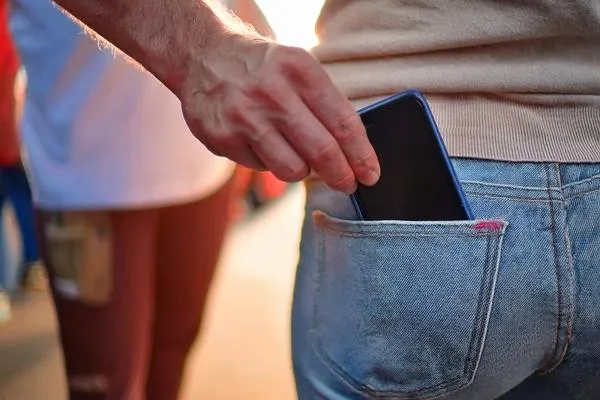
If Someone Steals Your Phone, Is MFA Still Enough to Protect You?
Multi-Factor Authentication (MFA) is one of the most effective cybersecurity tools available—but what happens if someone steals your phone? Can MFA still protect your data, or does it become just another weak link? As more users adopt MFA apps like Google Authenticator, Duo, or Authy, the assumption is that they’re bulletproof. But that’s far from the truth. In this post, cybersecurity expert Mike Wright, The Security Guru, breaks down why your smartphone could be the most dangerous place to store your second factor—and what to do instead. Learn the best MFA security practices for 2025, and why physical device theft matters.
If Someone Steals Your Phone, Is MFA Still Enough to Protect You?
You Trust Your MFA. But What If Your Phone Is the Problem?
Multi-Factor Authentication (MFA) is one of the most powerful tools in your digital security arsenal. It stops password-stealing hackers in their tracks, helps prevent account takeovers, and protects your most sensitive data. But there’s one big caveat most people don’t think about—what if someone physically takes your phone?
It’s a question I get asked all the time at live events, webinars, and in consulting calls:
“If someone has my phone, will MFA still protect me?”
The answer? Sometimes. But not always. It depends entirely on how you’ve set it up—and if you’ve made the same mistakes most people do.
MFA Isn’t Magic—It’s a Seatbelt
Let’s start with a reality check. MFA is a layer, not a force field. It’s meant to slow down, not stop, someone who’s already got a foot in the door.
Think of MFA like a seatbelt. It works great—until you leave your keys in the car. If your phone is stolen, and your authenticator app lives on that same unlocked phone, you’ve handed the thief both the front door key and the alarm code.
Here’s what makes this worse in 2025:
Phones now store more auth credentials than ever
Biometric unlocking makes it fast for you—and also for someone who has your fingerprint or face
Most people reuse one MFA method for everything
What Most People Get Wrong About MFA
1. Using Only SMS-Based MFA
Text-based MFA is the most common method—and the least secure. SIM-swapping, spoofing, or just grabbing your phone gives attackers easy access.
2. Keeping Authenticator Apps Unprotected
Google Authenticator, Microsoft Authenticator, and Authy are powerful—but not if they don’t have their own PIN, biometric lock, or device separation.
3. No Secondary Device or Offline Backup
What if your phone is gone, wiped, or hacked? You’re locked out—and possibly breached.
4. One Device to Rule Them All
Most people set up their MFA to live on the exact same phone where they receive email, run banking apps, and manage work credentials. In that case, your MFA is only as secure as your lock screen.
Real-World MFA Fails (Yes, I’ve Seen Them)
In a recent training with a finance team, one user had every work credential and MFA setup on the same phone—with no PIN. That phone got stolen during a vacation layover.
Result?
Email: compromised
Client data: exposed
MFA? Completely bypassed
Company response time: slow
Compliance report: not pretty
The Safer Way to Use MFA in 2025
Here’s what I recommend for businesses and individual users who want to harden their MFA posture:
Use App-Based MFA—But Lock It Down
Apps like Authy, Microsoft Authenticator, or Duo are great—just make sure:
They’re not set to auto-approve
You enable PIN or biometric access
You don’t keep the backup recovery codes in the same cloud drive
If you're just starting with MFA, check out my post on why using just a password isn't enough and how to get started with MFA the right way.
Consider a Hardware Security Key
YubiKey, Titan Security Key, and SoloKey are small devices that physically verify access. They can’t be phished, and they don’t live on your phone.
Use a Secondary Device for Admins
If you’re a system admin or have sensitive access, use two devices: one for daily use, and one locked away for account resets and critical access.
This approach ties directly into the principle of layered defense that I discuss in Why Most Cybersecurity Trainings Fail (and How to Make Yours Stick).
What About Google Authenticator and Apple Keychain?
These tools are fine for casual use—but let’s be honest, most people don’t treat them with care. I’ve reviewed setups where:
Recovery codes were emailed to themselves
Apple Keychain passwords were synced to family-shared iPads
No separation between personal and business credentials
If you’re trusting these tools, back them up with account alerts, remote wipe tools, and strong device locks.
Frequently Asked (and Slightly Panicked) Questions
“Can I use MFA on my phone for all my accounts?”
Sure—but don’t only use it there. Pair it with a backup method.
“Is SMS MFA better than nothing?”
Yes—but barely. It’s like a chain lock on your door.
“Should I approve every MFA prompt I see?”
Absolutely not. That’s how attackers using MFA fatigue break in. To understand how social engineering plays a role in this, read my post on The Con Artist in Your Inbox.
Mike’s MFA Self-Audit Checklist
Want to test how solid your setup is? Ask yourself:
Are all my MFA apps PIN or biometrically protected?
Do I have a secondary recovery method?
Am I using the same phone for everything?
Could I still access my key accounts if I lost my phone today?
Do I know how to remote-wipe my device?
If you answered “No” to more than one of these—you’ve got work to do.
Final Word: MFA Is Worthless If It’s Convenient for Hackers
Multi-Factor Authentication is essential—but like everything else in cybersecurity, it needs to be configured intelligently. If your phone becomes a single point of failure, you’re not layered—you’re vulnerable.
Treat your phone like the keys to your entire life. Because increasingly… it is.
Ready to Make Sure Your MFA Setup Is Actually Secure?
If you’re unsure whether your MFA configuration is helping or hurting your cybersecurity, don’t leave it to chance. I’ve helped leadership teams, IT departments, and small business owners lock down their systems with simple, actionable upgrades—no jargon required.
Let’s make sure your phone isn’t a hacker’s backdoor.
👉Get in touch with Mike for a one-on-one MFA audit, team training, or customized security consult.
